Why are contactless regulators better than other regulators?
Abstract: The main difference between non-contact voltage stabilizers with different main circuit structures lies in the adjustment method of the compensation voltage, which is directly related to the working reliability, dynamic response, voltage stabilization accuracy, voltage stabilization range, maximum capacity, Waveform distortion and other performance indicators. The main circuits of non-contact voltage regulators currently on the market can be roughly divided into the following three types:
In the field of modern power supply, to ensure the precise control and reliable operation of the power supply device, power electronic technology must be adopted, and power semiconductor devices (thyristor) must be used in the device. Power semiconductor devices have many advantages such as high efficiency, good control performance, small size, light weight, and reliable use. Therefore, the use of power electronic technology to upgrade power regulators has become the main development direction of high-power power regulators.
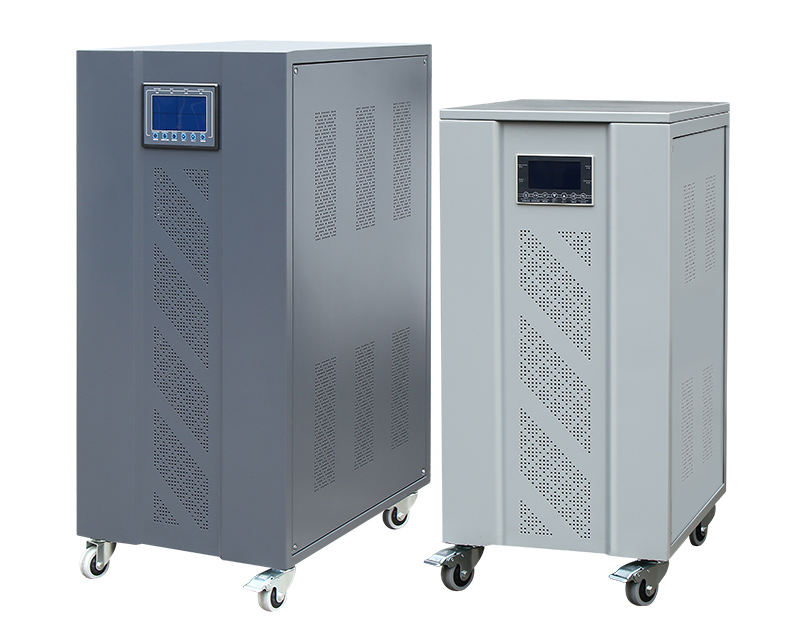
Comparison of Contactless Regulators with Other Contactless Regulators
The main difference between non-contact voltage stabilizers with different main circuit structures lies in the adjustment method of the compensation voltage, which is directly related to the working reliability, dynamic response, voltage stabilization accuracy, voltage stabilization range, maximum capacity, and waveform distortion of the voltage stabilizer. and other performance indicators. The main circuits of non-contact voltage regulators currently on the market can be roughly divided into the following three types:
1. Self-coupling voltage regulator compensation type
This structure switches the tap of the autotransformer by controlling the on-off of the triac, thereby changing the magnitude and polarity of the compensation voltage of the compensation transformer to achieve the purpose of stabilizing the output voltage.
The main advantage
( 1) Due to the step-by-step voltage regulation of the autotransformer taps, it not only reduces the on-off voltage of the triac (from 220V to below 200V), but also suppresses the surge current generated during shifting (the autotransformer itself It is a high-power reactor), thus greatly improving the working reliability of the triac.
( 2) As the "interlock isolation" technology is adopted in the control circuit, the circulating current problem caused by the malfunction of the bidirectional thyristor caused by external interference is completely solved, and the damage of the thyristor device is effectively avoided.
( 3) Since the control part mainly uses analog integrated circuits, it has strong adaptability to the harsh power grid environment.
2. Self-coupling
The non-contact voltage stabilizer of this structure directly changes the transformation ratio of the autotransformer by controlling the on-off of the triac, so as to achieve the purpose of stabilizing the output voltage.
main disadvantage
Since the thyristor is directly connected in series in the main circuit, the load current all flows from the thyristor, and the transient and fluctuation in the load current can easily damage the thyristor; and the long-term high current generates a lot of heat, which also makes the thyristor easy to be damaged. The thyristor works under harsh working conditions, the performance is deteriorated, and the reliability is deteriorated.
In addition, using this structure to make a large-capacity voltage stabilizer, the thyristor capacity also needs to be selected very large, which causes great difficulties in the determination of the thyristor margin coefficient and the heat dissipation design of the thyristor. It is easy to cause poor reliability.
Compared with auto-coupled, the advantages of contactless voltage regulators are:
Since the thyristor of the contactless voltage stabilizer is not in the main path of the load current, it is only connected to the voltage regulating circuit, and the current passing through is not large, only a fraction of the load current, or even one-tenth of the load current. Therefore, the margin factor of the device can be selected calmly, the heat is not too strong during operation, and the thyristor can work reliably for a long time; at the same time, the capacity of the voltage stabilizer can also be made large (the largest capacity that can be produced at present). 2 5 00KVA ).
3. Pure compensation
This structure is to control the input, exit or change of polarity of the compensation transformer combination through the on-off of the bidirectional thyristor , so as to achieve the purpose of stabilizing the output voltage.
main disadvantage
The thyristor is directly connected between the phase line and the zero line ( 220V) through the bridge arm, so the working voltage is high, and the surge current generated when shifting gears is large, which is very easy to damage the thyristor; at the same time, this circuit is in the When the thyristor is misconnected, it is easy to cause a short circuit between the phase line and the zero line, and the thyristor will be burned in an instant, so its reliability is very poor.
Compared with pure compensation type, the advantages of contactless voltage regulator are:
Since the thyristor network of the non-contact voltage regulator is located on the output side of the compensation transformer and is stepped down by the autotransformer, the on-off voltage of the thyristor is reduced (from 220V to 200V or lower) , and can suppress the surge current generated when shifting gears (the autotransformer itself is a high-power reactor), thus greatly improving the working reliability and anti-interference ability of the thyristor.
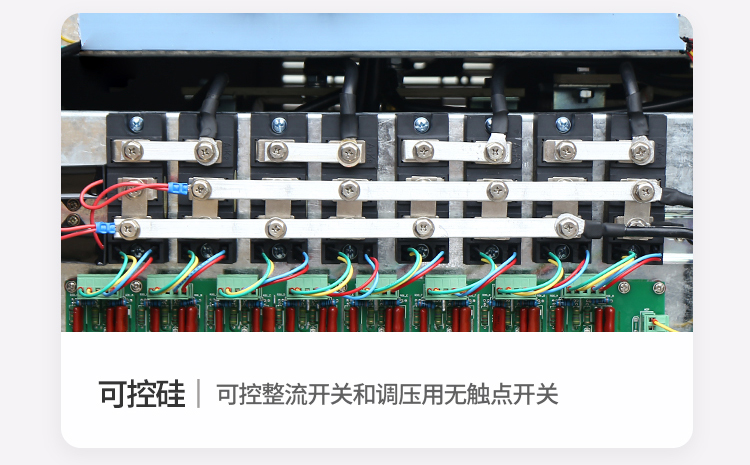
Contactless Voltage Regulator
Three /single-phase numerical control non-contact voltage stabilizer is a new generation of fast voltage stabilizer that has been successfully developed after years of hard work on the basis of years of production of compensatory power stabilizer equipment. Has a number of unique technologies in the country.
It is mainly composed of isolation transformer, SCR module, CPU control core, fast voltage regulation technology and safety protection device. It realizes full contactless control, safety, high efficiency, energy saving and environmental protection. It is a perfect combination of SCR switch technology and transformer technology.
Fundamental
It adopts the latest DSP arithmetic and measurement chip control technology, fast AC sampling technology, RMS correction technology, current zero-crossing switching technology and fast compensation voltage regulation technology. , precision.
Advantages and disadvantages
advantage:
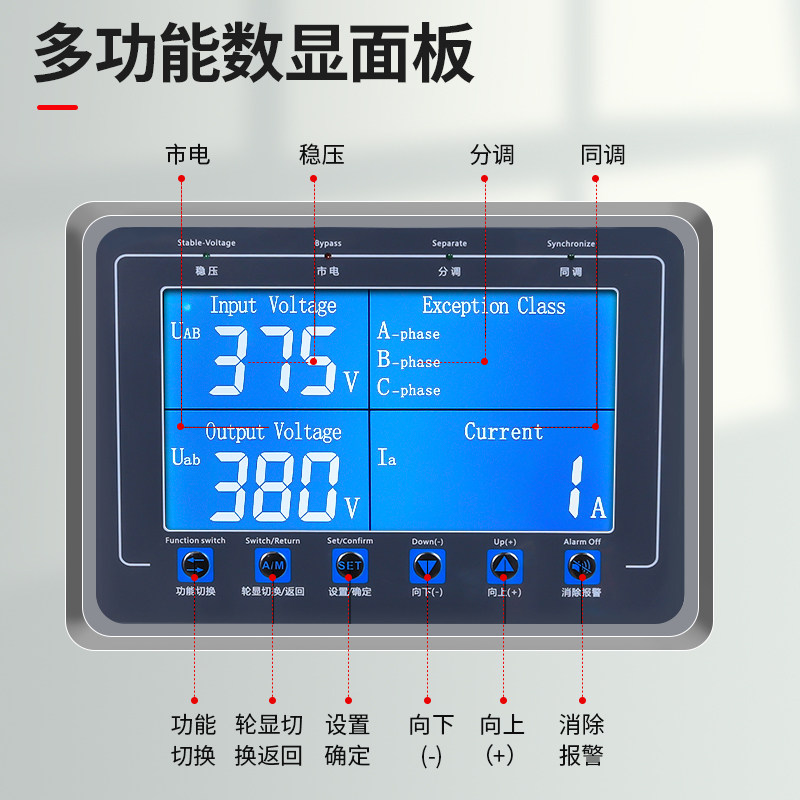
1. Smart meter display: Smart meter display system (display voltage, current, power, power factor, etc.), clear, accurate, high resolution, membrane key operation, safe and reliable. (The carbon brush regulator is only indicated by a pointer meter, which is not clear and accurate. It can only indicate voltage and current.)
2. High-speed response: When the input voltage fluctuates greatly and frequently, since the voltage stabilization speed is 20 milliseconds, as long as the voltage stabilization range of the voltage stabilizer is wide enough, the output voltage can always be maintained at the voltage stabilization value set by the user. , for any production equipment and instruments, without the influence of voltage changes. There will be no overvoltage or undervoltage trip bypass phenomenon, so there is no need to have the function of automatically returning to the voltage regulation state after the voltage is normal. (The response speed and voltage stabilization speed of the carbon brush type regulator are slow, and it takes 4 to 10 seconds to stabilize the output voltage. The grid voltage fluctuates greatly and frequently fluctuates, so it can’t stabilize the voltage at all, and it will also burn the electrical equipment. For example: when the input voltage drops from 220V to 150V in an instant, it drops by 70V, and the output voltage is equal to 150V, which is far lower than the safe voltage. It will stop working. When the input voltage rises from 150V to 220V in an instant, it rises by 70V, and the output voltage is equal to 290V. At this time, all electrical equipment will burn out.)
3. The voltage stabilizer does not perform compensation function when it is turned on. The output voltage is the same regardless of the input voltage. It is necessary to detect the output voltage value 1 second after turning on the voltage before performing the corresponding compensation and voltage regulation, so that there will be no output when the voltage is turned on. The voltage is too high or too low and the electrical equipment is burned out. (The carbon brush regulator does not have this function. If the input voltage is very low when the last shutdown, the regulator is in the boosting state, and the boosted voltage value is relatively high, then it will remain in this state after the shutdown. The next time it is turned on When the input voltage is relatively normal or very high, plus the voltage raised by the regulator, the output voltage will be very high and all the electrical equipment will be burned out. On the contrary, the input voltage was very high when the last shutdown, The voltage regulator is in the step-down state, and the voltage drop is a lot. After the second boot, when the input voltage is very low, the output voltage will be lower, and the electrical equipment cannot work normally. This situation is often prone to damage.
4. Strong overload capacity: it can be used continuously under 100% rated load conditions, and can withstand 10 times the current in 10 milliseconds and 3 times the current in 1 minute without damaging the machine. (The carbon brush type regulator cannot run at full load for a long time. Because the temperature of the regulator increases after being loaded, the contact area between the carbon brush and the toroidal transformer is small, and the contact surface between the carbon brush and the toroidal transformer will spark and burn easily. Bad carbon brushes and toroidal transformers. In addition, if the grid voltage fluctuates greatly and frequently, the motor drives the carbon brushes to swing back and forth, so the carbon brushes wear out quickly and need to be replaced frequently.)
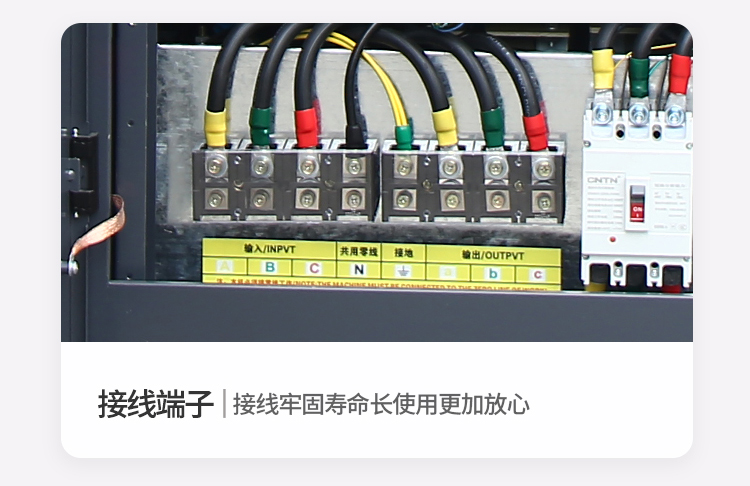
5. No distortion: Using the current zero-crossing switching technology, there is no interruption in the switching process, no surge current is generated, so that the waveform is not distorted. The isolation transformer used in the non-contact voltage stabilizer is an isolation compensation transformer, that is, the main circuit and the compensation circuit are isolated. The advantage of this circuit is that when the thyristor of the compensation circuit switches the voltage gear at the zero-crossing point of the current, the voltage and current waveform of the main circuit will not produce peaks and cut off the current. but a standard sine wave.
6. Three-phase sub-adjustment: the voltage of each phase is independently regulated, without affecting each other, and the voltage regulation accuracy is as high as +-1%. And each phase can independently set the output voltage according to the needs of the load. If the output voltage value of each phase is set to be the same, the unbalance of the three-phase output voltage is less than 1%. (The carbon brush type regulator has poor voltage regulation accuracy, ranging from +-2% to +-5%, and cannot be independently regulated for each phase. When the input voltage is unbalanced in three phases, the output is also unbalanced. It can no longer meet the current requirements. Many loads require high voltage accuracy. Such as: testing instruments, printing machines, CNC lathes, computer gongs, wire cutting machines, etc.)
7. High efficiency, energy saving and environmental protection, the efficiency reaches more than 99%, the volume is small, it is convenient for transportation, and it does not occupy much space when placed. (The carbon brush regulator has low efficiency, only 96%~98%, and cannot be energy-saving and environmentally friendly. It is large in size, heavy in weight, inconvenient for transportation, and occupies a large area when placed.)
8. Safe and reliable: It is equipped with functions such as overload, overvoltage, undervoltage, phase loss, short circuit, overheating protection, lightning protection and fault diagnosis, which can protect the load for 5 seconds. Customers can buy and use our products with confidence. (The carbon brush regulator does not have these functions, and it is easy to burn out the load machine, cause fire, and other problems.)
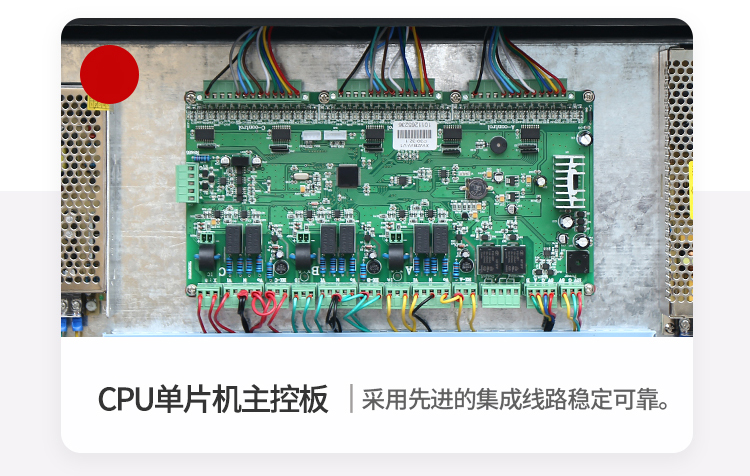
9. Strong preset function: output voltage value, protection limit value, voltage stabilization accuracy and voltage stabilization speed can be set arbitrarily.
10. Bypass function, easy to maintain: It can be switched between "stabilized voltage" and "bypass direct power supply", which is convenient for use in faulty maintenance. (The carbon brush type regulator does not have this function. When there is a fault and needs to be repaired, it can only be powered off and shut down, which will lead to wrong production and bring losses to customers.)
11. Strong anti-interference ability, control circuit board power supply and sampling, all have high-medium and low-frequency filter circuits, and the drive circuit that controls the thyristor is also isolated by optocoupler output, which can resist pulse interference signals above 2000V. Such as grid voltage waveform peaks, interference signals, can calmly deal with. (The carbon brush regulator does not have this function, the grid voltage waveform has spikes, and the voltage cannot be regulated normally when the signal is disturbed. The voltage is high or low, and the load is burned out.)
12. The voltage of the voltage stabilizer is sampled by a digital AD chip. If the input voltage waveform is true, the calculated voltage values are all effective values, which will not affect the output voltage change. (The voltage of the carbon brush regulator is sampled by the rectifier circuit, and the peak value is sampled. When the input voltage waveform is vectorized, the output voltage will increase or decrease. The more severe the vector is, the more serious the output voltage increase or decrease, while Use electrical equipment to burn out.)




